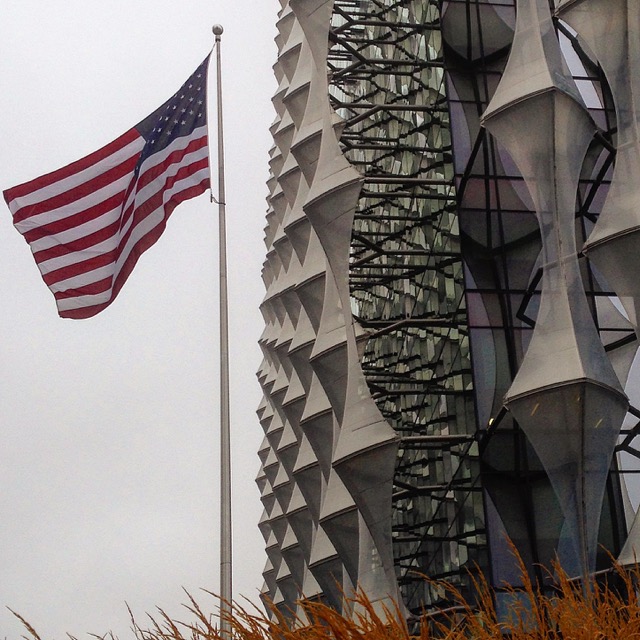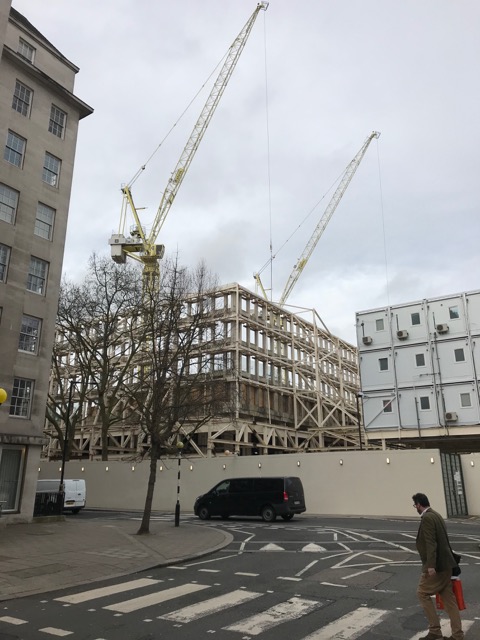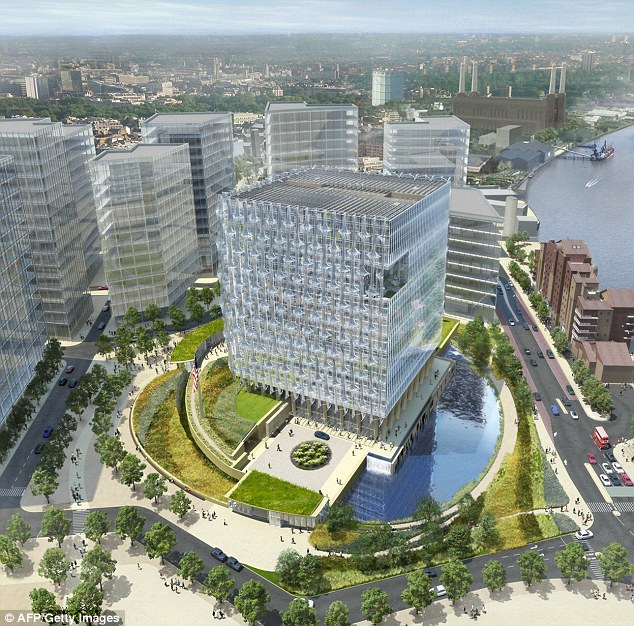
Don’t call it a moat.
Let’s be clear about that from the start; it’s not a moat – it’s a lake. Well, that’s according to the US Embassy.
We’re talking about the stretch of water that separates the main embassy building (or, more properly, the ‘Chancery’ of the Embassy) from the road. There’s a patch of green space that one can walk through and a cascading fountain. It doesn’t surround the building, but its purpose is for security, a further level of protection from anyone driving a car or truck from the road towards the main structure. That makes it a moat in my book.
The effect is reinforced by the cuboid nature of the building, one which echoes the medieval keeps of castles – think of William the Conqueror’s White Tower – and one can even see aspects of Iron Age forts in the earthworks that hide protective concrete bollards.
The embassy has been on its current site in Nine Elms, south of the river near Vauxhall, for the past two years, Moving from its previous location in Grosvenor Square, where it had been since 1938. (Although, in one of those wonderful historical palimpsests, John Adams, the first American minister to Great Britain, lived at 9 Grosvenor Square in the 1780s.) That building – currently completely gutted, with only lacework facades left – was the only US embassy in the world where the US government did not own the land on which it stood.
Grosvenor Estates granted a 999 year lease, at peppercorn rent, but refused to sell the freehold. (The story is that when President Kennedy asked the Duke of Westminster to grant the freehold, the Duke agreed on condition that all Grosvenor lands seized after the War of Independence were restored to the family. As this included modern day Miami (or New York, depending on who’s telling the tale), the President demurred.)
The present building was designed by the architectural practice Kieran Timberlake, who had to balance aesthetics with the priorities of security. They also built one of the greenest buildings in London with ‘outstanding’ BREEAM and ‘platinum’ LEED ratings. The roof is covered with photovoltaic cells, rainwater is collected and recycled, and ground heat exploited.
The strange baffles on three sides of the cube are part of this eco-thought. They are made from a high-performing translucent plastic that diffuses the heat of the sun so that less air conditioning is needed. The ‘cut out’ on the eastern face is a balcony for the ambassador’s office, looking downriver to the Houses of Parliament.
Nearby is the Dutch embassy, so the developers have called the area ’embassy gardens’, perhaps in the hope that other countries will move their chanceries to Nine Elms. This might be challenging; the rumour is that some of the loudest voices calling for the new Nine Elms-Pimlico bridge are diplomatic staff who want a quick route across to SW1.
President Trump was dismissive about both the location and the design of the new embassy, which is reason enough to give it the benefit of the doubt (although the best description of it I’ve heard is that it looks like a “maximum-security Travelodge”).
And then there’s the moat. More buildings should have moats.


